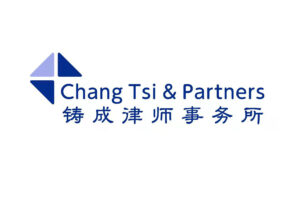A good design often combines a number of elements, including technical merit, artistic merit and distinctiveness. It may contain elements which can be accorded protection under several PRC intellectual property laws, including the PRC Patent Law, the PRC Trademark Law, the PRC Copyright Law and the PRC Anti-Unfair Competition Law.
Legislative intent
Clearly, a rights holder will wish to protect his lawful rights in as many ways as possible. One design may therefore be subject to multiple forms of protection.

Head of the
Patent Department
Chang Tsi & Partners
Multiple protection is rarely redundant. The system of trademark law, on one side, is different from the systems of copyright and patent law on the other.
The legislative intent of patent law is to grant an exclusive right for a limited period of time in a limited territory in exchange for a disclosure to the public.
The legislative intent of copyright law is to protect originality for a certain period of time. Both systems of law stress special protection for a specific period of time, after which the subject of protection enters the public domain and recovery of the resources from the public domain is barred.
In contrast, trademark law does not prohibit the extraction of resources from the public domain. In fact, a large number of trademarks derive directly from humankind’s common pool of words and designs, such as the Apple brand of electronic products and the series of Peter Rabbit books.
What trademark law protects is not words or designs in the public domain, but rather their ability to provide identification or distinctiveness The public can continue fully to use the resources in the public domain in their original meaning. For example, the owner of the Apple trademark has no right to interfere in people’s use of the word “apple” for the fruit in its common meaning, and the owner of the series of Peter Rabbit trademarks has no right to interfere in people’s use, as this term is understood in the copyright law, of the content of the series of Peter Rabbit books.
On the other hand, the simultaneous or subsequent protection of a design by the PRC Trademark Law will not prevent a work or design patent from entering the public domain once the period of protection has expired under the PRC Copyright Law or PRC Patent Law. The PRC Trademark Law aims only to prevent the confusion or misleading of the public as to the source of the products.
Again taking the Peter Rabbit books as an example, even though the rights holder’s works are now in the public domain, insofar as the cover illustration of Peter Rabbit can be used to identify the rights holder, it may be registered as a trademark. However, insofar as confusion is not caused among consumers, anyone (such as, in this case, the Social Sciences Press in China) has every right to use the original illustrations and text in any works they may produce.
Differences in scope and effect
Multiple protection is not redundant protection.
Firstly, there is a material difference in the interests protected by design patents, copyrights and trademarks. A design patent protects the innovation in a product’s designed appearance, and the necessary precondition to obtaining a patent for a design is novelty; copyright protects the originality of a work, focuses on whether the work is an independent creation of the author, and does not concern itself with whether the work is novel; a trademark right protects the distinctiveness of a mark, and even if a mark is an independent creation of the author and has a high degree of artistic merit, it will not obtain the protection of trademark law if it cannot be used to distinguish the source of a good or service.
Secondly, the effect of the protection accorded by each type of law is different. Patent law grants the rights holder an exclusive right, which prohibits others from using the design unless they have a licence from the rights holder. Copyright law only prohibits reproduction, and does not prevent others from independently creating a similar or identical design. Trademark law only prohibits use by others that could result in confusing or misleading the public, providing a mechanism for the rights holder to prevent the unfair or fraudulent passing off of his mark.
Finally, in determining whether or not infringement has occurred, there is a difference between trademarks and design patents.
The benchmark for determining infringement of a trademark is whether confusion among the public has been caused. In contrast, the benchmark for determining infringement of design patent is whether the appearance of the products is identical or similar, without consideration of whether public confusion might arise.
Multiple protection justified
In view of the differences in nature between trademarks and copyrights, on the one hand, and design patents, on the other, in terms of the interests protected, the effect of the rights and the determination of infringement, it can be seen that the securing by a rights holder of multiple protections is a justified enforcement strategy.
In fact, patent rights, trademark rights, copyrights and rights relating to the unique trade dress of the packaging of well-known goods are civil rights expressly provided for in law.
As it is a fundamental principle of the PRC’s civil law system to protect the lawful rights and interests of its subjects, where it is not expressly precluded by law, the accumulation and protection of multiple rights is legitimate. A subject may enjoy multiple rights in one design.
Where multiple rights are accumulated, the types of remedies available to a rights holder extend to all the types of remedies available for all of the rights, provided that remedies that are identical in nature are not used redundantly (e.g. damages may not be calculated by adding up the amounts for the infringement of each right).
Rose Xu is a patent agent and head of the patent department at Chang Tsi & Partners

Bei Zhan Bei Jie Street, Xicheng District
Beijing 100044, China
Tel: + 86-10-8836 9999
Fax: + 86-10-8836 9996
E-mail: litigation@ctw.com.cn
www.ctw.com.cn





















